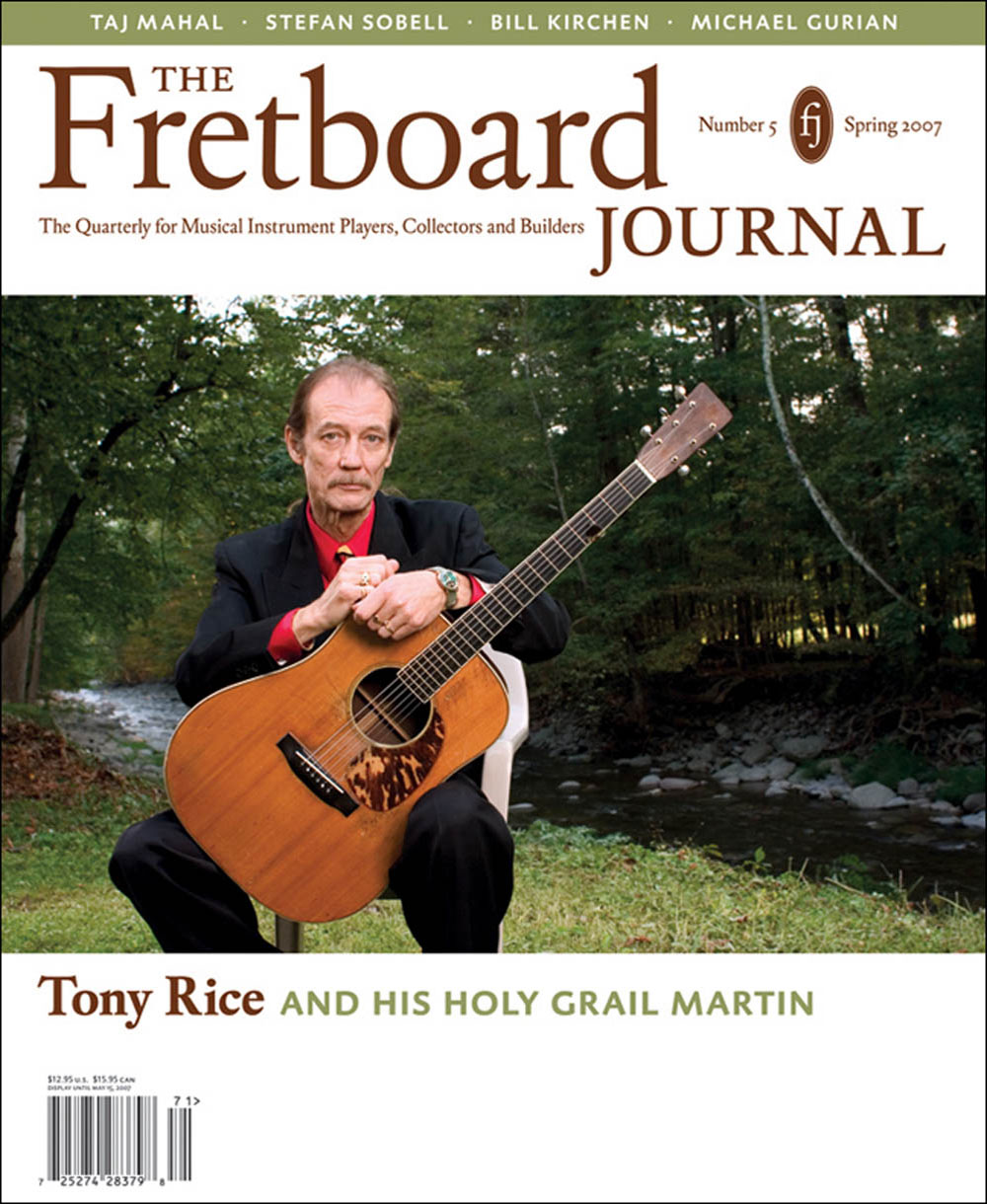The 40-year reunion was only a moment away. So, I moved it on over. Just enough for Nick Kukich to bend down and flip the five brass latches securing the battle-scarred black guitar case.
One day last June, I hauled the case from my home in Spokane, Washington, to the current headquarters of the Franklin Guitar Company on the second floor of a cavernous former furniture warehouse in southwest Portland, Oregon.
“I didn’t think anybody’d buy a Kukich,” he quipped with a grin, so he named his shop after Franklin Road in the Michigan village of Franklin, where he began building guitars in 1971. In his 51st year making some of the planet’s finest acoustic guitars, Kukich recently finished his 713th instrument.
Franklins have been played and praised by such steel-string notables as Al Di Meola, Josh White Jr., Larry Coryell and John Renbourn. In addition, expert fingerstyle artist Stefan Grossman documented his appreciation in an unsolicited 2014 YouTube tribute.
“I love guitars, and I’ve had many, many guitars over the years,” said Grossman after performing an intricate piece. “But in the 1980s, I met a guitar maker, and he didn’t just make guitars, he made magical instruments—and they’re called Franklin guitars.”
I know just how Grossman feels.
In the fall of 1982, I asked Kukich to make me one of his best. Eight months later, he called with good news. I still remember the thrill of driving to the Franklin shop, headquartered in Sandpoint, Idaho, at that time.
Fortunately for both of us, my saint of a mother loaned me the rest of the dough. She did so knowing full well that her son’s salary for committing random acts of journalism placed the odds of repayment up there with the Mariners winning the World Series.
Forty years later. My sweetheart of a mom is gone. And despite a couple scares, Seattle hasn’t set foot in a World Series, let alone won one. Yet my appreciation for guitar #357 in the Franklin genealogy grows deeper each year.
Generally speaking, most stories about a guitar maker will likely devolve into a dusty discussion about nut widths, bracing patterns or the virtues of hide glue. Yet picking a fine handmade guitar is the second most heavenly endeavor I can think of.
My journey to Portland, Oregon was about reconnecting with Kukich and giving him a second look at the exquisite instrument he brought into the world four decades ago. The guitar is an OM5—OM meaning “orchestra model,” and 5 represents Franklin’s foremost in materials and appointments. Think nicely quartersawn and bookmatched Brazilian rosewood back and sides. Over the years, the brown sunburst on the Engelmann spruce top has acquired a slight greenish tint. The many abalone embellishments were all carved by Kukich.
My order, he once confessed, helped keep him afloat during a lean, long winter when the boutique acoustic guitar market had all but hit the skids. In a touch I didn’t expect but have always cherished, Kukich added a personal note on the trademark salmon-and-blue Franklin cardstock that he routinely signs and then glues directly below the sound hole.
“To Doug: a true friend.”
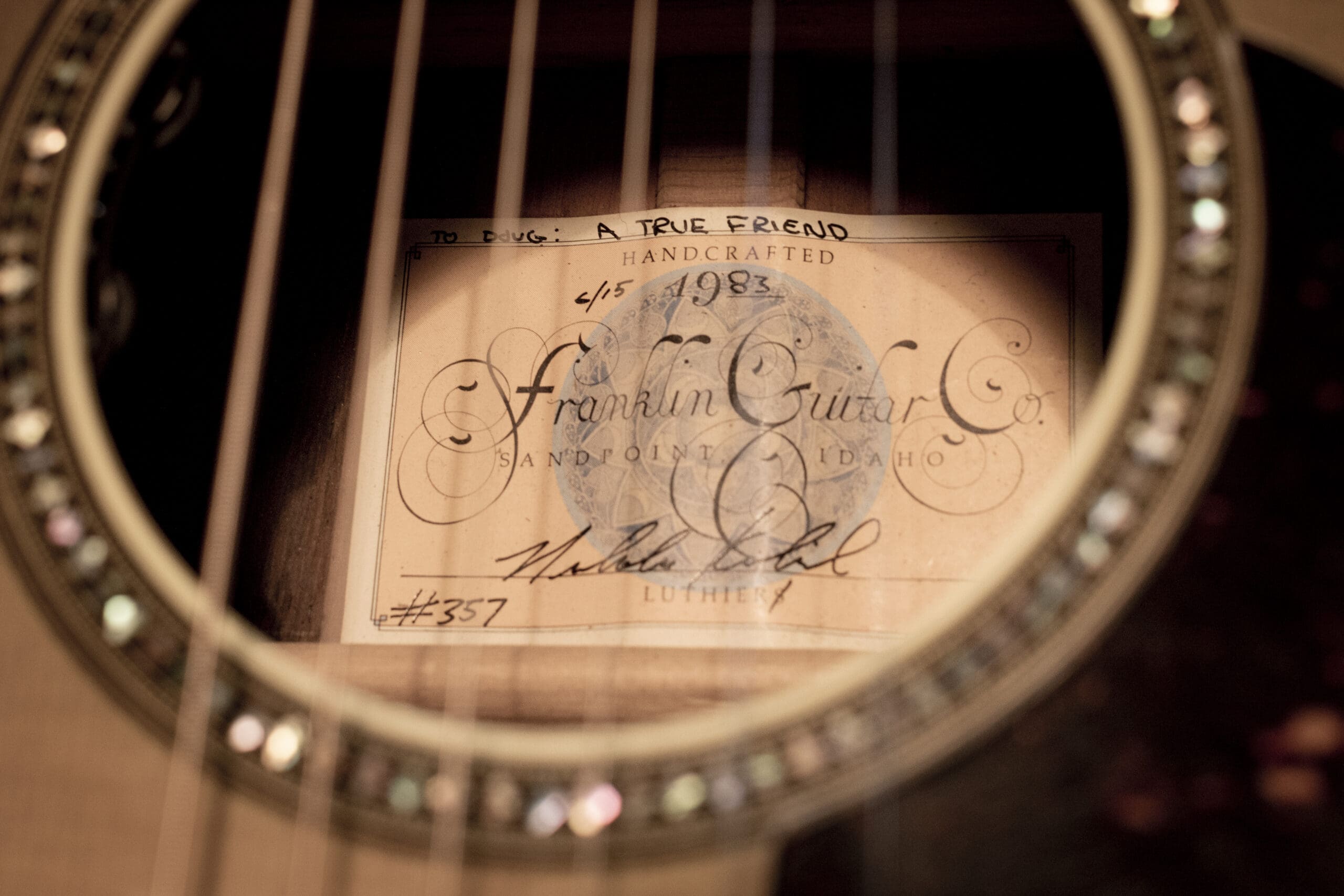
Kukich opened the case with a measured reverence that reminded me of that memorable apartment scene in Pulp Fiction when Vincent Vega opens the mysterious briefcase and is suddenly bathed in a holy glow.
While there was no such radiance at this unveiling, Kukich’s eyes did appear to light up as he began to assess his handiwork.
He picked up the guitar, holding it against the worn beige shop apron that protected his shirt, a faded rosy madras plaid. He strummed the fresh strings (Santa Cruz Parabolic low tension) and plucked a bluesy riff or two. He eyeballed the binding like a dermatologist looking for suspicious moles.
“The first thing that caught my eye was how beautiful the abalone is,” Kukich said a bit later.
“But when I played it—well, it was a little emotional. I thought, ‘Wow, did I make this?’” The wow factor of any guitar always boils down to how it sounds. In that regard, #357 delivers the balanced, sparkling presence that the best OMs are known for. “This is what happens to an instrument when you let it age 40 years. It opens up.”
He paused. “They’re all good,” referring to the guitars he builds, “but some are extra good.”
Kukich was 28 when we first met. He wore his hair in an irreverent rumble of long brown curls. His angular face and intense brown eyes reminded me of a Blonde on Blonde era Bob Dylan, minus the scarf.
The Dylan curls are long gone, and Kukich is now a clean-cut 68-year-old who wears his graying hair short and combed. He stands 5-foot-9 and weighs in at a trim 160. Dark round eyeglasses give him a professorial look, along with a beard and mustache, neatly trimmed and primarily white.
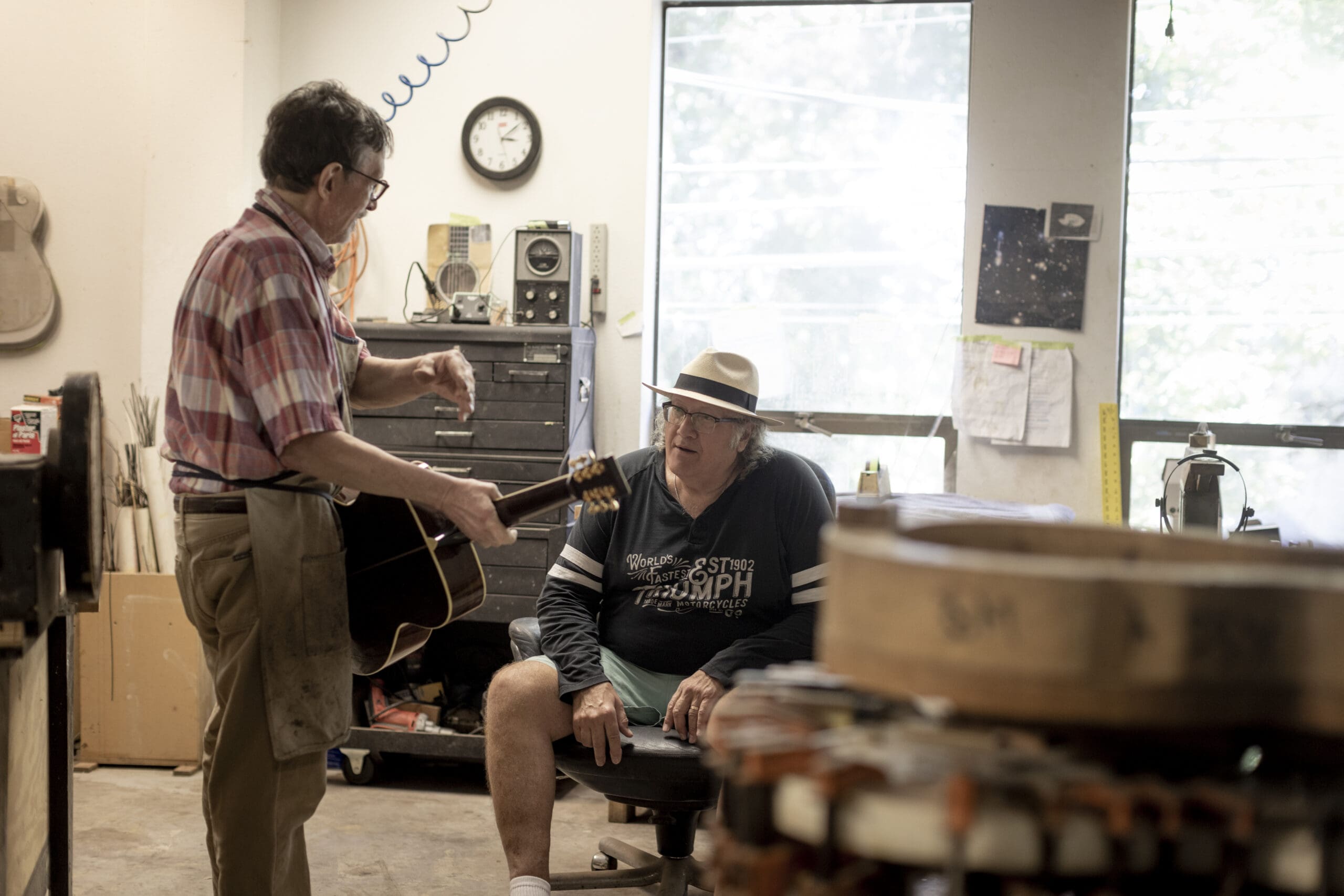
It can take years for a luthier to establish a reputation. However, Kukich drew attention early by being among the first guitar makers—if not the first—to recreate the legendary OM, the Martin company’s first 14-fret guitar. “I didn’t know anyone else who was making OMs at that time,” he said.
According to one of Kukich’s reference books, Martin made fewer than 1,400 OM guitars during the few years the style existed (1929–1933). The story has it that the OM was created for a bandleader who wanted a steel-string guitar to compete sonically with the banjo. Though the guitar we now call the OM was short-lived, it was a game changer. Bigger and louder than its predecessors, the OM ultimately launched a modern wave of 14-fretters, including the Rubenesque and ubiquitous Martin dreadnought.
“Those original OMs were magical,” said Kukich. “An amazing guitar.” OMs are now part of almost every respected guitar line, adored by singer/songwriters, collectors, and performers galore. (Martin reintroduced an OM line in 1990.) Grossman, for example, was playing one of his prize Franklin OMs when he made the video mentioned above.
I ordered guitar #357 in 1982, which was 10 years before Eric Clapton went Unplugged and won six Grammys and sold 19 million copies. Granted, Clapton reportedly played a couple of vintage Martin OOOs, which feature “short scale” necks (24.9″-scale) vs. the traditional OM “long scale” neck (25.4″-scale), but the body sizes are the same.
The point is that the Clapton star-power propelled a renewed and mass interest in OM-style guitars. Not so when I met Kukich. As far as I knew, the OM was the preferred mantra for practitioners of Transcendental Meditation.
What did I know? I was a dreadnought guy. Why? Because I grew up in the 1950s and 1960s. All my acoustic influencers played dreadnoughts: John and Paul. Bobby D. Joan Baez. Neil Young. Doc Watson. Joni Mitchell. Harry Chapin. Johnny Cash…Heck, even young Elvis thwanged away on a dreadnought.
First thing I did when I got signed to a little independent gospel label as a 20-year-old was to head downtown to a music store. There, I started eyeballing a brand new 1971 Martin D-35. But unfortunately, it was $600 that I did not have. Bummer. “No problem,” said the helpful music store dude who showed me how the guitar could be mine for just 100 bucks down.
What a country! I inked my name on a piece of paper. Took my Martin home. And made easy-credit monthlies practically until Reagan was sworn in.
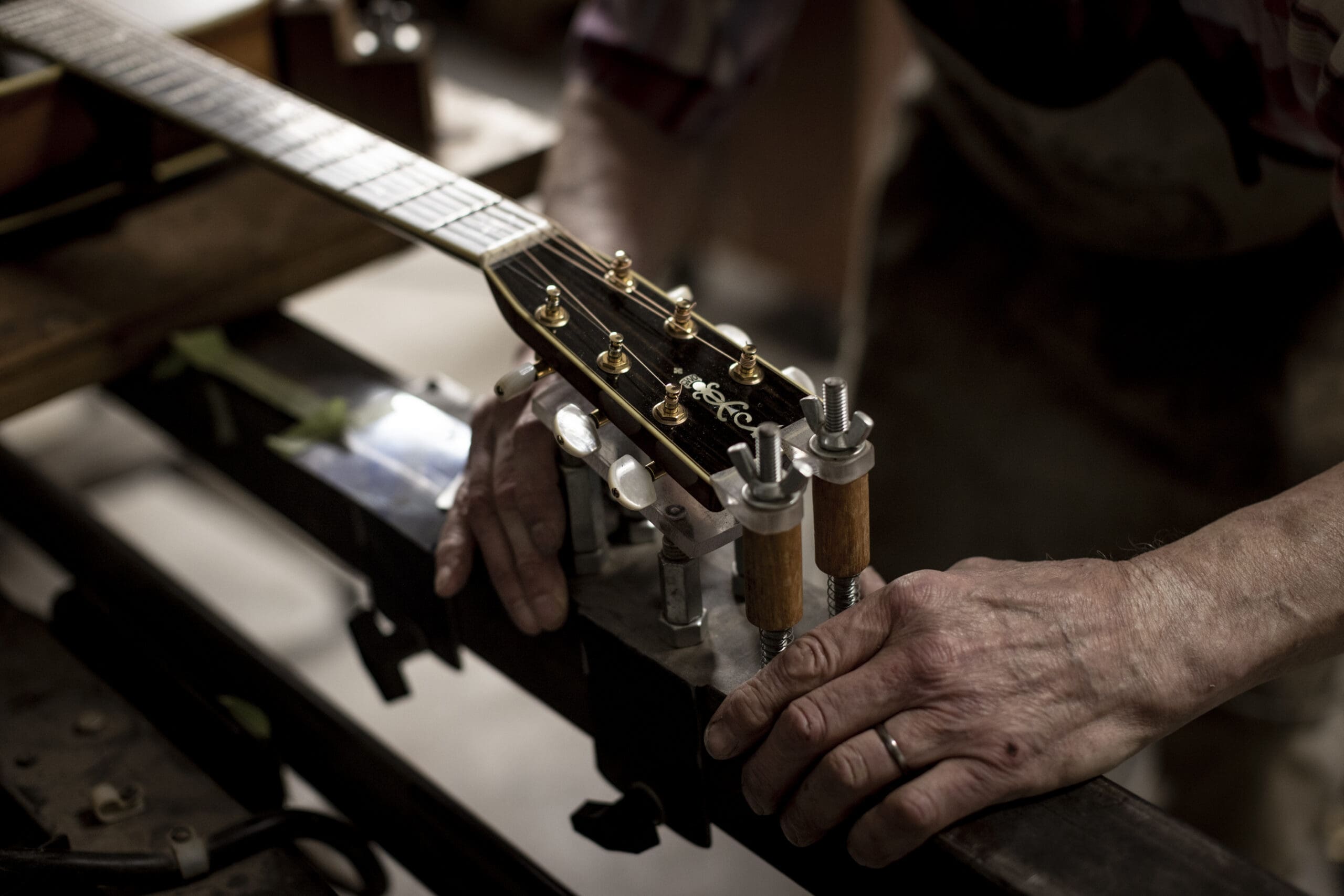
Nick Kukich was going to be a chemist.
That was the plan, anyway. Kukich grew up in New Kensington, Pennsylvania. Smart enough to skip a grade, he graduated from Pittsburgh’s prestigious Youth Learning Center in 1971 at just 17. Then he took one chemistry class at the University of Pittsburgh. That was enough to suck the romance out of an imagined life of test tubes and lab jackets. “Chemistry was hard,” he said. “And boring.”
Kukich came up with a new idea: He’d help move his girlfriend, Deborah, and her 110-pound St. Bernard, to her sister’s place in Phoenix. “My mother saw me packing a suitcase and asked what I was doing,” said Kukich, laughing at the memory. “I told her, ‘I’m heading out West.’”
The course of Kukich’s life shifted gears when he slowed for two hitchhikers near the Pennsylvania-Ohio border. The young men were from New York City. They slid gratefully into Kukich’s green-and-white ’63 Volkswagen bus and said they were traveling to Jerome, Arizona.
Kukich had never heard of the place. But the way the two kept talking it up intrigued him. So after unloading Deborah and her wooly mammoth, Kukich decided to ferry his passengers another 100 miles north and check Jerome out for himself. Kukich never saw Deborah again. He can’t even remember the St. Bernard’s name, although he thinks it was something Spanish. But Jerome struck a chord. He immediately fell for its vibe and the small community of maybe 200 artists and hippies.
Wandering through Jerome, Kukich stopped cold when he saw a fetching guitar with six silver nylon strings in a shop window. “At the time I thought acoustic guitars were carved out of one big block of wood,” he said. “Hey, I didn’t know. I was an electric guitar guy. I had a Fender Telecaster. I just thought you did something similarly to make an acoustic.”
Kukich entered the store. He was astonished to learn that the man behind the counter, Robert Marsh, had made the instrument. “I told him I wanted to buy it. Marsh said, ‘Well, I can show you how to make one for the same price.’”
Sold! Kukich spent the rest of the summer immersed in a strange new world of files, clamps, sawdust and glue. He labored to make a guitar of his own while making every rookie mistake imaginable.
He recalled, “The first guitar I ever made looked like a pear. It wouldn’t fit in a case. It had Nicaraguan rosewood back and sides and a red top, but it still came out sounding incredible.
“It was fucking awesome.”
Kukich began to embrace the notion of being a guitar maker. His sophomore effort, however, would test that resolve. “The next guitar I made was horrible,” he said. “My confidence was shaken, but I decided to stick with it a little while longer.” Marsh, however, saw promise in his teenage protégé.
“Bob was an artist, right down to the self-instruction. He lived art. Sculptor. Guitar maker. Artist. But he wouldn’t jive you,” said Kukich.
“I’d carve a guitar neck, say. Spend all day on it, sanding it down to a high gloss. Bob would just look at it and say, ‘That’s a piece of shit. That’s really bad.’ Not even, ‘Well, you might be able to work it out.’ Instead, he’d say, ‘That’s one of the ugliest things I’ve ever seen.’
“I’d be really hurt. But then he’d tell me why he said what he’d said and show me why, and I’d see it.”
At summer’s end, he convinced Kukich to migrate with him to the Detroit suburb close to Marsh’s family. There, Kukich landed a job with Music, Strings ‘n’ Things, a guitar shop specializing mainly in pre-war Martins and Gibsons. “Kind of a hippie place,” he explained. “My job was to do repairs and keep all the instruments tuned and cleaned. For that, they let me sleep on the floor in a teaching room.”
It was 1972. A year of Watergate, Pong and Paul Simon released his minus-Artie album with songs like “Mother and Child Reunion.” Deliverance also came out that year. For a while, you couldn’t turn on a radio without hearing the movie’s “Dueling Banjos” theme.
“I think I heard that song a thousand times,” said Kukich. “We couldn’t keep a banjo in stock.”
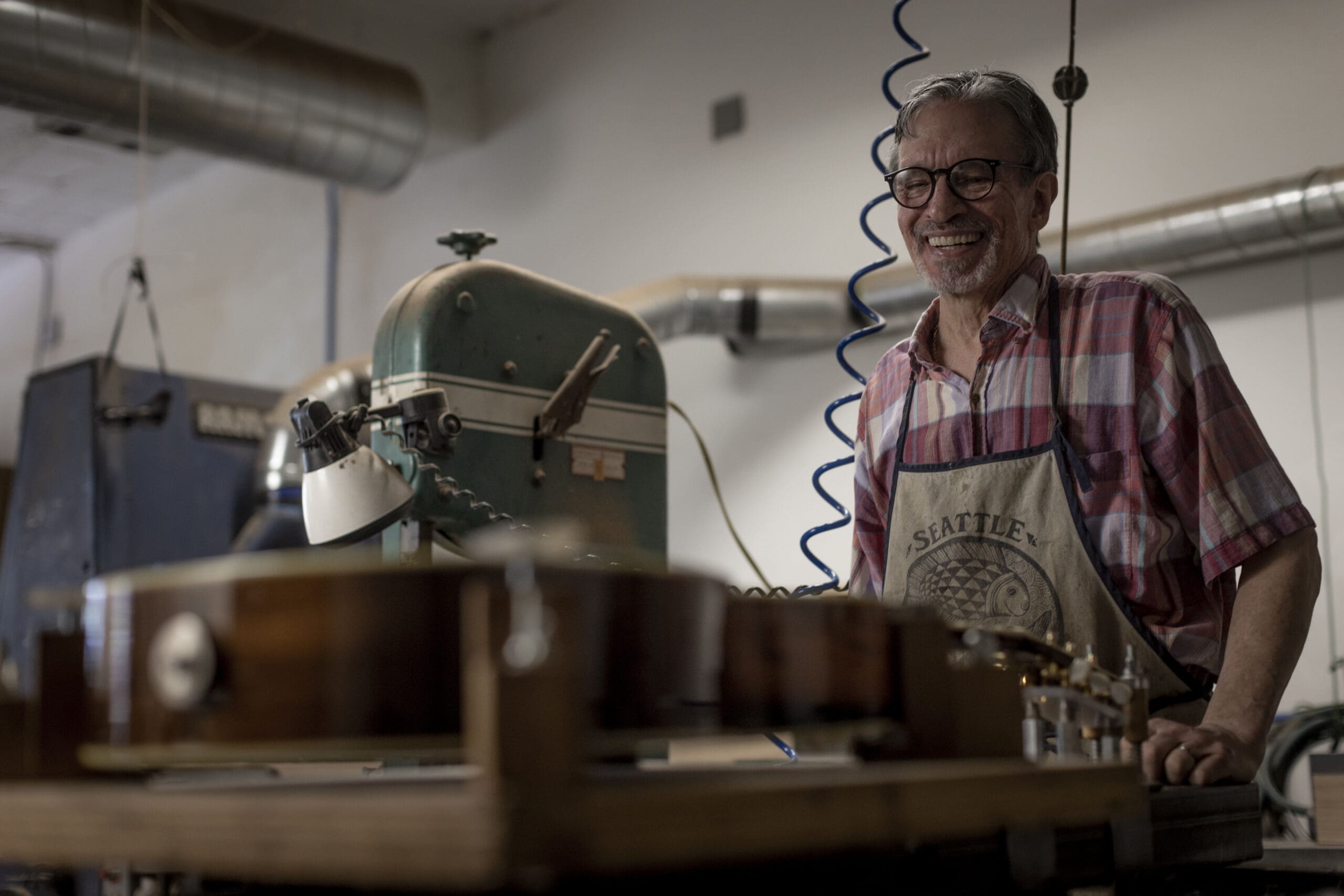
Along with his entry-level sleeping arrangements, Kukich was given a shop area to hone his guitar-building chops. During this period, he also discovered the instrument that would account for 70 percent of the Franklin output. That happened when a damaged 1930 OM-28 came into the store for repairs. Kukich, knowing its rarity, bought the instrument for $2,200, thanks to a “loan” from his mother, Genevieve.
Kukich credits his mother for financially backing his lean early days. “My brother Mark and I had this college fund. At that point, I decided I wouldn’t go to college and would become a guitar maker. So my mom took my fund and doled it out to me over four years.
“‘You can be a guitar maker,’ is what she said. Because of that, nobody ever saw my mistakes. I was never forced to say, ‘Oh, my gawd. It’s a piece of junk, but I’ve got to sell it.’”
Kukich took his damaged OM apart. He measured every bit with care and precision. Then he began building his own version with some necessary improvements. “The original OMs had banjo tuners that had two gears,” he said. “The strings would always slip. The guitars wouldn’t stay in tune.” Kukich made 11 OMs with modern tuners, Brazilian rosewood, and European spruce. The guitars caught the attention of Laurence Ostrow, brother of Lieb, who owned Music, Strings ‘n’ Things.
Laurence had his own mail-order music business. Kukich remembers what Ostrow told him like it was yesterday. “He said, ‘I can sell as many of them as you can make.’”
The Franklin Guitar Co. was off and running, with stops in Franklin, Michigan; Sandpoint, Idaho; Seattle; Portland, Oregon; Rocheport, Missouri, and back to Portland.
The accolades Kukich received as a luthier on the rise carried an emotional price tag. Kukich, see, is the antithesis of the self-promoter. He’s no salesman, and he’s no glad-hander. Instead, he’s introspective and comfortable being reclusive. “I’m not the best ambassador for Franklin Guitars,” Kukich conceded, adding that his wife, Jeanne, is more suited to handle the orders and their website.
Yet all that unaccustomed early attention made Kukich very, very uncomfortable. “I made the cover of Acoustic Guitar magazine. I’d go to guitar shows and people I’d never met would come up and act like they knew me. Like we were friends. I didn’t like it. It freaked me out.” Kukich won’t go so far as to blame his alcohol and drug dependency on his anxieties and insecurities. But he’d hardly be the first artist who tried to assuage the inner demons through self-medication.
Kukich calls the years between 1997 and 2001 his “Dark Period.” He drank too much. He became hooked on pain pills, which gave way to heroin, first to smoke and then to inject. “I don’t have any veins left,” he said, extending his arms.
The buzz surrounding the Franklin Guitar Co. had produced orders. Way too many orders.
“I wound up with three years’ worth of orders stacked up,” he said. “They were based on three people working, but it was just me. The phone would be ringing all day with ‘Where the fuck’s my guitar?’ It got to where I’d hear the phone ring and I’d feel the muscles in my back tense up. I stopped answering the phone. To this day I don’t talk to many people on the phone.”
His mother passed away during this time. Kukich was a mess. There was even a rumor floating around for a while that he had died. Kukich thinks he knows who started the rumor—a guy who thought it would increase the value of the Franklins he was selling.
Finally, Kukich bottomed out. He decided to kick his heroin habit the hard way.
“Jeanne stayed on the third floor,” he said. “I stayed on the second floor, unbelievably sick.” Kukich said his weight dropped to 135 pounds. Vomiting. Diarrhea. The shakes. It was a horror show. Kukich said he spent some time in rehab and came out committed to staying clean and continuing to build the best guitars he possibly can.
Gospel guitarist El McMeen is a believer.
“There are terrestrial instruments and celestial instruments,” said the noted fingerstyle artist. McMeen described a terrestrial instrument as bolder, like a grand piano. Franklins, he contends, fall more into an ethereal realm with more “sustain” and “sparkle.”
McMeen figures he has owned maybe eight Franklins over the years, including a signature model Kukich made with koa back and sides. It’s a “sound that Nick captures,” he added. “They are very, very special.” But, of course, Kukich would be the last person you’d ask to rate his Franklins vs. the many other great guitar builders.
“I don’t play anybody else’s guitars,” he said. “That way I can’t talk about them.”
That remark encapsulates Kukich’s insulated, almost monastic approach to his art. He works mainly alone, usually from 8 p.m. to dawn. Day in. Day out. One guitar at a time. Mainly OMs, but other models, too, as the orders roll in. The Prairie State, for example, is an OM with two inches added to the lower bout in tribute to the large guitars made by the Larson Brothers in the 1930s. Plus, the occasional dreadnaught.
“I still love doing it,” he said. “I can work by myself. I can work or not work. No bosses. I haven’t learned it all yet, but it’s still my passion.”
Before I leave, I have to ask. What would it take today to remake #357, my OM5?
Kukich smiled. He said he wouldn’t touch it for less than $19,000. Good thing my ma isn’t around to hear that.
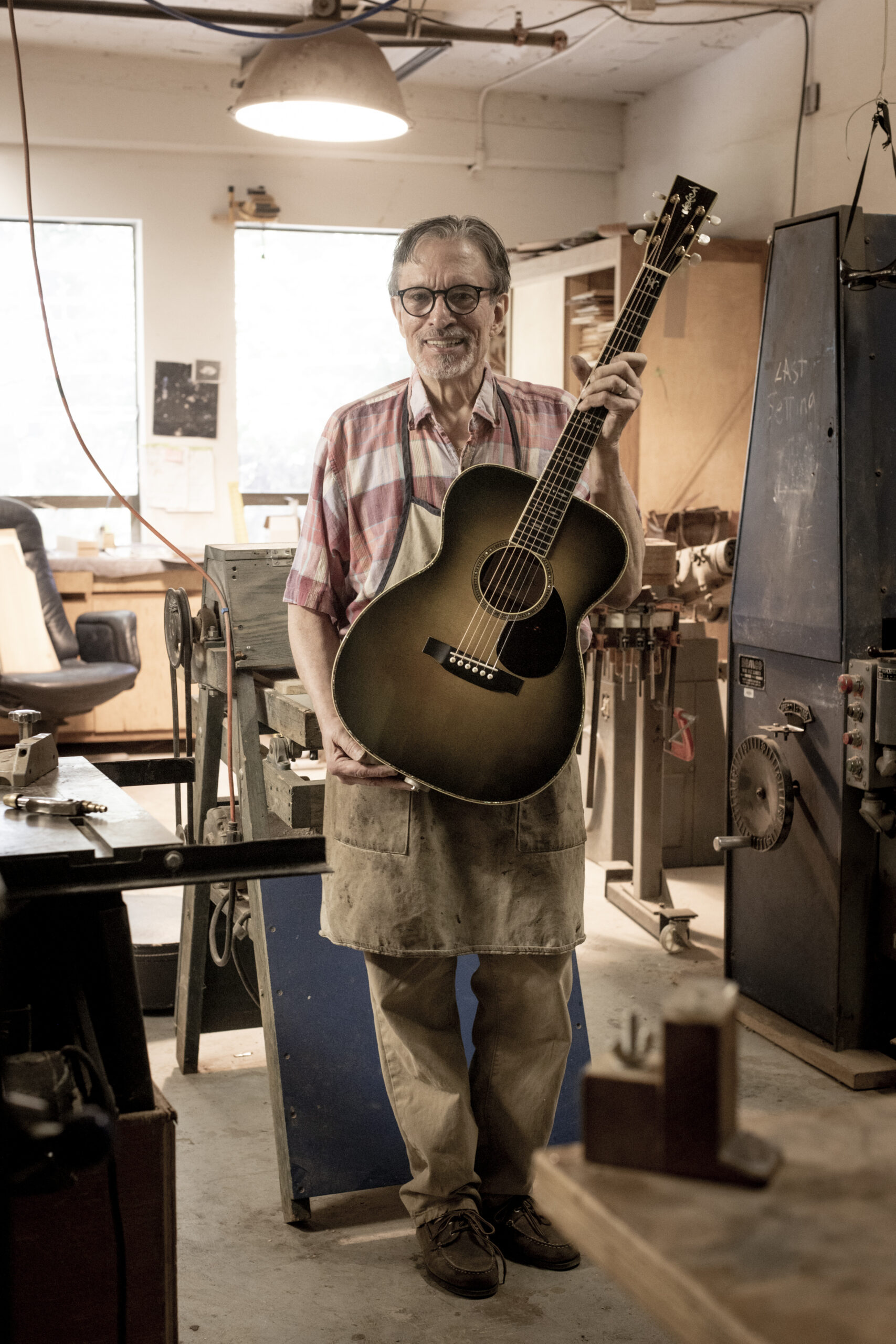
Photographs by Aaron Blatt. This article originally appeared in our 51st issue.













































